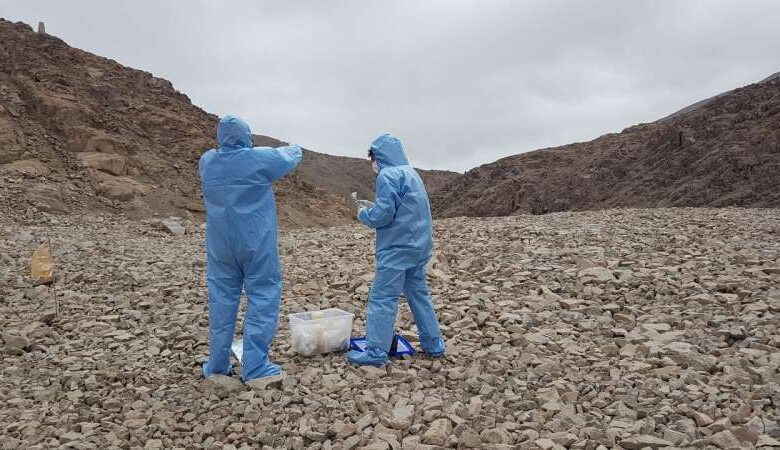A hidden biosphere beneath the lifeless desert

GUEST COLUMN
 Vir Singh
Vir Singh
Planet Earth, so far, the only known living planet in the whole cosmos, has deepest affinity for life. The Earth loves life. The Earth tends to preserve, conserve and enhance life in its every nook and corner, even in the laps of the most inhospitable ecosystems. Planet Earth’s profound affinity and nurturing embrace of life is illuminated by a recent ground-breaking discovery of a hidden biosphere nestled beneath the Atacama desert, one of Earth’s extreme environments and most inhospitable places on Earth. Long believed to be devoid of life, this parched landscape has now revealed a stunning array of microbial life thriving in the depth below.
The Atacama desert, Earth’s driest dessert, stretches over 1,00,000 square kilomtres along the western coast of South America, encompassing parts of Peru, Bolivia, Chile, and Argentina. Its arid climate, characterised by virtually no rainfall and extreme temperature fluctuations, has led scientists to compare it to the conditions found on Mars. Yet, despite its inhospitable surface, researchers have long suspected that life might persist in the subsurface, shielded from the extreme harshness above.
Recent expeditions led by an international team of scientists have confirmed these suspicions, as they delved into the depths of the desert’s soil and rocks. Using cutting-edge techniques, including DNA sequencing and isotopic analysis, researchers have identified a diverse community of microorganisms thriving in this unlikely habitat.
Elena Rodriguez, lead researcher of the project, describes the discovery as a “remarkable revelation.” “The Atacama Desert has long been regarded as a lifeless expanse of sand and rock,” she says, “but our findings challenge that perception entirely. Below the surface, where conditions are more stable, we have encountered a thriving ecosystem of microbial life.”
The newfound biosphere is teeming with microbial organisms adapted to the extreme conditions of their subterranean environment. These microorganisms, including bacteria, archaea, and fungi, have developed ingenious strategies to survive in this harsh landscape. Some feed on minerals, while others rely on chemical reactions for energy, carving out a niche in this hidden realm.
This wonderful discovery seeds sanctity for life in our mind. Exuberance of life everywhere on Earth gives a feel of increased sphere of our own existence and enhances our own cheerfulness. There is enormous diversity of life but all organisms are tied into oneness. We must cultivate an attitude of reverence for Mother Earth and the life flowering in her biosphere.
The discovery of life beneath the lifeless Atacama desert carries significant implications for our understanding of life’s resilience and adaptability. It unfolds the capacity of life to persist in even the most hostile environments, expanding the boundaries of habitats beyond what was previously imagined. Moreover, the microbial communities uncovered in the Atacama may hold clues to life’s potential on other planets, such as Mars. With its similarities to the Martian surface, the Atacama desert serves as a natural laboratory for studying the limits of life in extreme environments and refining our search for extraterrestrial life.
As researchers continue to explore the depths of the Atacama desert and other extreme environments on Earth, they are sure to uncover even more surprises. Each new discovery brings us closure to unfolding the mysteries of life’s origins and its potential across the cosmos. The hidden biosphere beneath the Atacama desert serves as a moving reminder of the resilience of life and boundless wonders that await discovery, both on our own planet and beyond. This discovery not only expands our understanding of the boundaries of life on our own planet but also fuels optimism in the search for life beyond Earth, suggesting that life could persist in similarly extreme environments elsewhere in the universe. Earth’s capacity to foster life in such diverse and extreme conditions reaffirms its role as a cradle of life, constantly surprising us with the tenacity and versatility of living organisms.
On this life-enhancing discovery, a blend of ecological, philosophical, and spiritual feel is generated in our mind conveying us a biophilic message- life loves life.
(The author is professor emeritus, environmental science, GB Pant University of Agriculture and Technology. Views expressed are personal)






